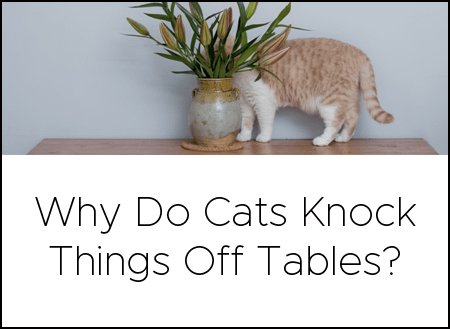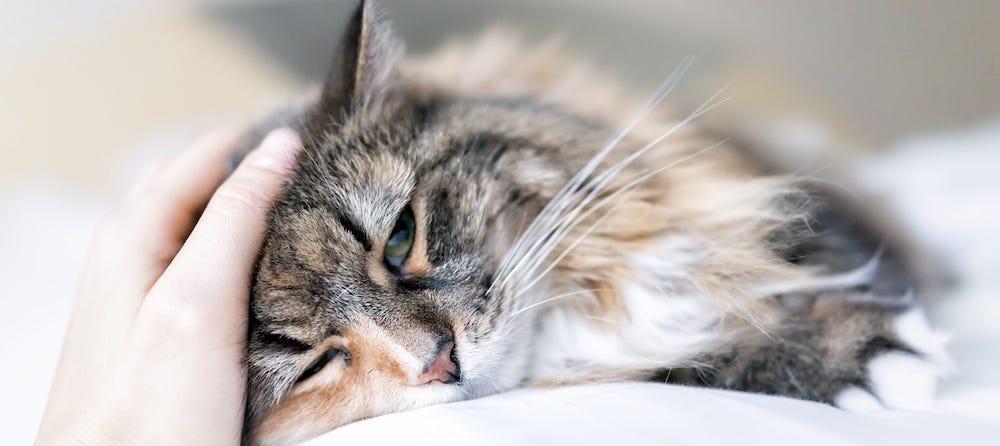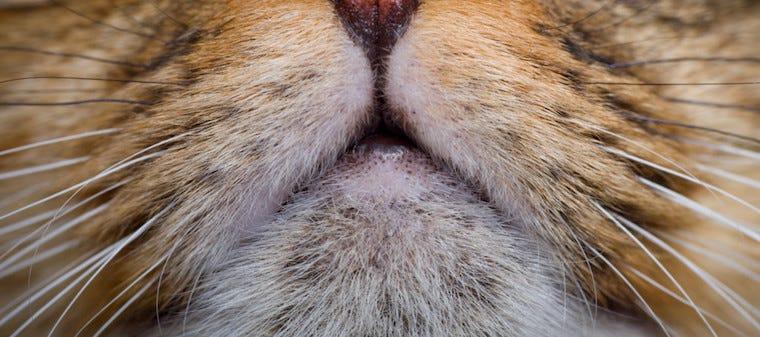OK, it’s 2 A.M., and you and your cat are wide awake. Your cat has been dry-heaving all over the carpet in the middle of the night, but you’re not sure if you need to get to the emergency veterinarian. How do you know when it’s safe to “wait it out” to see your veterinarian the next day versus going into the ER vet?
My general rule?
If you’re worried, please go in to the emergency vet.
Remember, cats have such stoic natures that they don’t show clinical signs of illness until it’s really, really severe. This likely stems from their evolutionary descent from big cats; for example, lions don’t show signs of illness until it’s really severe—that’s to prevent a competitor from taking over the pride. It’s likely the same for your cat too.
Because cats hide their signs, even subtle signs (like hiding) warrant an emergency visit to the ER veterinarian, as it’s often a really advanced, potentially end-stage disease.
When to seek immediate veterinary attention
Here are some general guidelines on when you need to seek immediate veterinary attention, even if it’s in the middle of the night. (This list is by no means all-inclusive.)
- Hiding in unusual places (like the closet)
- Difficulty breathing (like panting, open-mouth breathing, a respiratory rate over 50 breaths/minute [hint: count the number of breaths in 15 seconds and multiply by 4 to get the total breaths per minute])
- Not moving and lying in one spot
- Crying out in pain
- Being acutely paralyzed
- Any trauma
- Any poisoning
- Excessive drooling or foaming at the mouth
- Any seizure activity
- Making multiple trips to the litter box with no urine coming out (especially if there’s no urine at all in the litter box for more than 24-36 hours!)
- Straining to urinate or defecate in front of you or in unusual places
- Excessive grooming of the hind end, with the penis sticking out (which may be due to a life-threatening feline urethral obstruction or urinary blockage)
- Profuse vomiting (such as more than 6-12 times in a 12-24-hour period)
- Not eating for several days
- Lying near the water bowl and drinking excessively but still appearing dehydrated
- Any string hanging out of any orifice (Please don’t pull – leave all orifices to veterinary professionals. For real.)
Again, while this list isn’t complete, it’s a good place to start. When in doubt, contact your veterinarian or the emergency veterinarian, as they may be able to better guide you. Better yet, be prepared and pre-program your cell phone with all these important numbers (including the emergency vet and the ASPCA Animal Poison Control Center).
Other considerations
For you tech-savvy Litter-Robot owners, please make sure to monitor your Whisker app—your cat should normally be using the litter box 3-4 times a day. If you notice repeated, frequent cycling of your automatic kitty litter box (such as 6-12 cycles), get to a veterinarian to make sure your cat doesn’t have feline lower urinary tract disease (FLUTD), a urinary tract infection, or a urinary obstruction! That’s because increased visits to the litter box could be signs of a medical problem.
Lastly, as an emergency critical care veterinary specialist, let me help you be a financially savvy owner and the best advocate for your cat. Undoubtedly, emergency vets are more expensive (as they need to have more diagnostic tools, supplies, and medications). So, it’s best to go to your family veterinarian sooner rather than later—the sooner they can pick up on a disease (stemming, for instance, from a symptom like excessive drinking), the less costly the emergency visit may be!
When in doubt, better to heed on the side of caution, right? You won’t regret playing it too safe with your feline family member.










